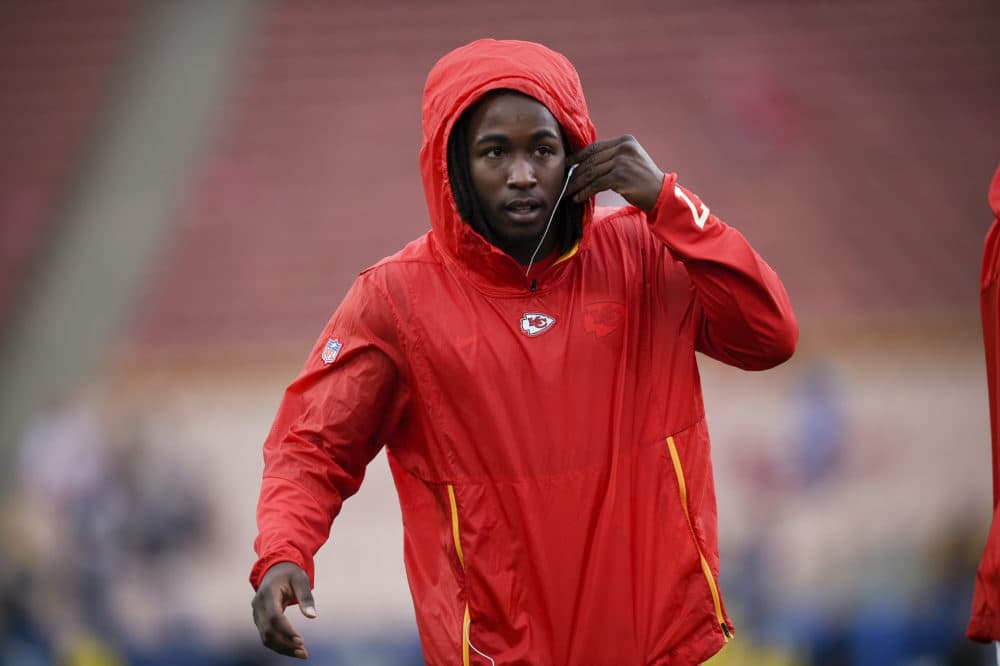Advertisement
ANALYSIS
How Kareem Hunt And Deflategate Show The NFL Fumbles Its Investigations

If you’re looking for insight into the investigative practices of the NFL, start with the Kareem Hunt case and Deflategate. Whether the NFL wants to admit it or not, the disparity between the two says a lot about the league’s priorities.
This isn’t about equating Hunt's alleged assault of a 19-year-old woman to deflated footballs. You can’t. It’s about the fact that, when it comes to misconduct, every NFL player is governed by Article 46 of the collective bargaining agreement, no matter how serious the allegations.
“Obviously, these are two very different scenarios,” says Michael McCann, a Sports Illustrated legal expert and associate dean of the University of New Hampshire Law School. “One is incredibly serious and the other is hardly serious from a social standpoint. [In terms of investigations], it’s a question of what the NFL wants to do, really. They set their own priorities. We can judge them by how they pursue things.”
So, how do they pursue things?
The scope and depth of the Deflategate investigation was staggering. From the dozens of witnesses to the 139-page Wells Report to the science experiments that resulted in an 82-page report, the NFL rabidly sought answers to protect the integrity of the game. Meanwhile, the NFL hasn't even interviewed Hunt.
As the NFL caught considerable flak for not being more thorough in its investigation into Hunt and the accusations against him, it released a carefully worded statement on Sunday afternoon. That statement described the investigation as “ongoing” and read, in part, “Consistent with standard investigatory practices, the NFL continues to pursue a complete understanding of the facts.”
The alleged assault took place in February, and those “standard investigatory practices” still have left a lot to be desired and determined.
“If the league is presented with this type of situation, how does it not interview Kareem Hunt?” says McCann. “That, to me, is breathtaking. You don’t need a tape, if you have a narrative that he hit someone. It’s a simple step to contact him and ask him to explain himself and see if he’s consistent, see if what he’s saying makes sense, see if it matches up with the facts. If it doesn’t, then there’s a problem. The striking thing about this is that it didn’t require a massive investigation. It required a meeting."
Instead of interviewing Hunt, the NFL let his former team, the Kansas City Chiefs, do the questioning. According to a report from The Athletic, Hunt told the Chiefs, “I never left the room. I didn’t do a thing.”
But the Chiefs were far from an unbiased interviewer. They had a vested interest in believing everything and anything Hunt said about what happened because he was the team’s star running back.
"The striking thing about this is that it didn’t require a massive investigation. It required a meeting.”
Michael McCann, sports law expert
Imagine if the NFL let the Patriots interview Tom Brady about the inflation levels of footballs and left it at that.
Even to those without a legal or law enforcement background, it’s clear more could have been done with interviews of those involved in the Hunt incident and in the pursuit of any related security videos.
Instead, the NFL’s “standard investigatory practices” resulted in TMZ publishing a video of the incident before the NFL saw it. That video showed Hunt shoving and kicking a woman, contradicting what he told the Chiefs.
In its statement, the NFL described the video as “new information that was made public.” Yet, the league and the Chiefs knew about its existence back in February. In fact, The Athletic also reported that the Chiefs attempted to obtain the video, but the league told the team to “stop pursuing it.”
If the Ray Rice case taught NFL leaders anything, they should have known the video would eventually come out. And they should have known better than to wait and see what becomes public. Now it appears that, once again, a TMZ video motivated the NFL to act.
In the wake of the Ray Rice incident in 2014, when Rice was caught on tape punching his then-fiancee Janay Palmer, the NFL promised a tougher stance on domestic violence involving its players and better investigatory practices. Four years later, those practices still leave more questions than answers.
